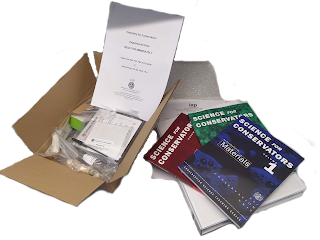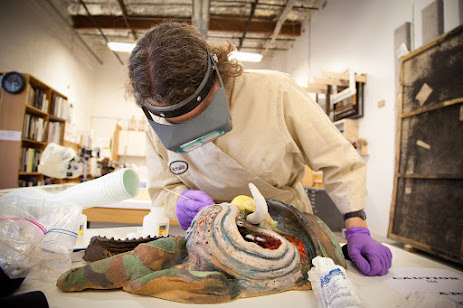Domestic Digitising Doings 06: Sliding to a Halt
It’s not that I’ve been too lazy to update this blog – oh no indeed! Far from it as a matter of fact. A good Curator is adept at prioritising tasks to ensure the best work is done in the best time so in the last, ahem, four months I’ve simply been working on more time-critical endeavours. Like, erm, digging a pond. And catching up with my hobby of sitting down. And drawing naff cartoons. So there.
 |
| I will not be giving up the day job. Thanks for asking. |
Anyway…
BACK AT THE SCANNING.
What’s going on with the project to digitise my family’s
slide collection?
Well it’s kind of, erm, done.
Yup.
6,451 transparencies all scanned and catalogued, a chronicle of family
activities between the early 1960s and 2000. Boom. Done.
Actually, truth be told it was done a little while ago – in fact I finished
scanning on the 22nd January. Not too shabby considering the work
only started on 8th December. Turns out it’s quite easy to average
145 scans per day as long as you have;
a) Created a decent working space and logical workplan to follow.
b) Plugged in a second screen so you can do your day job/watch Christmas films simultaneously.
c) Someone bring you coffee/festive beverages on demand.
Also let's not forget;
d) Nothing else to do.
Although an act of utter insignificance beyond the immediate
family (and even then they’re not that bothered), this project has been a fascinating opportunity to consolidate big chunks of our family's recent history and vastly improve access to our own archives. I'm quite proud to have got this far with digitising and feel almost evangelical in my urge to recommend everyone dig our their old images and get scanning!
Like all projects there comes a time for an evaluation. That time is................................. now.
WHAT WENT WELL?
- The numbering system worked well, both for numbering
individual slides (starting ‘00001’) and for storage boxes (starting ‘0001’).
Simplicity is not to be underrated!
- The MS Excel catalogue, derived from the SPECTRUM basic standard
and my own professional experience, was able to quickly record all the
available information about the location, form and content of the slides. In
the unlikely event that any Museum would take receipt of parts of the
collection this database would serve as a handy repository for all the critical
data to be migrated into a swish professional Collections Management System
(CMS). Curators of the future can thank me with cake. But cake now, not future
cake.
- The balance between the speed of scanning and the quality
of the final image was struck reasonably well, with the project whipping along
at a fair pace and churning out results suitable for most printing uses without
crippling computers in terms of processing time or storage.
- Taking the time to sort out slide boxes roughly by period and then individual slides into their proper sequences was definitely worth it. As well as speeding up the scanning process, as I didn’t have to look at each slide except to check it was the right way up, this helped the catalogue naturally form sequences which will be much easier to browse.
 |
| A view engraved on my brain over winter 2020. |
WHAT DIDN'T WENT WELL?
- Errors were minimised through having a clear workplan and a
tidy working area, but annoyingly a couple of errors crept in through my not
paying attention. The scanner had a habit, every 100 slides or so, of partially
scanning an image and then losing the connection to the PC and saving an
incomplete scan. There was an audible cue for this (you get intimately
acquainted with the clicks and whirs of the little machine over time), and nine
times out of ten I flagged the error and reset the scanner to scan the image
again using the same intended filename, instead of automatically moving along to the
next number in sequence. On the tenth, however… No images were un-scanned, but
there are a couple of blank numbers in the catalogue which irk me.
- Minor point, in the ‘Person Name’ field in the catalogue I
wish I’d created separate fields for each person name instead of lumping them
all in the same box. This would have made searching by name easier, but at
least it is something which could be rectified on a very very very rainy day.
- It does niggle a bit that I didn’t individually label the physical slides, as is de-rigueur in museum practice. I umm-ed and aaah-ed about it early on and decided it wasn’t worth the considerable extra time, which I still think was the right thing to do for this project (though I wouldn’t DREAM of not doing it at work!) but, y’know, ach.
WHAT NOW FOR THE SLIDES?
 |
| Back in the box, you. |






Comments
Post a Comment